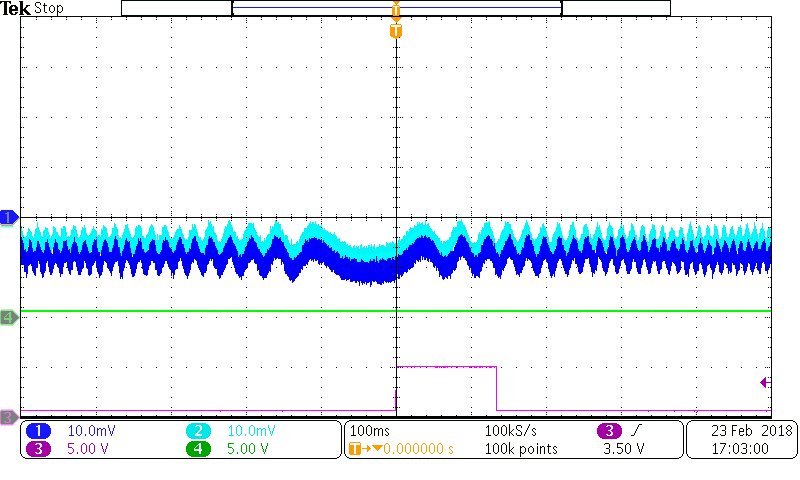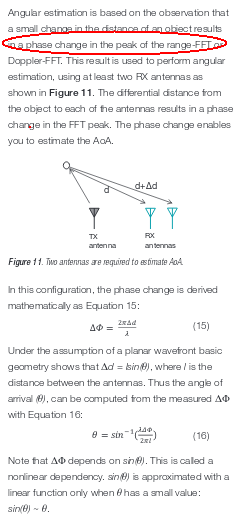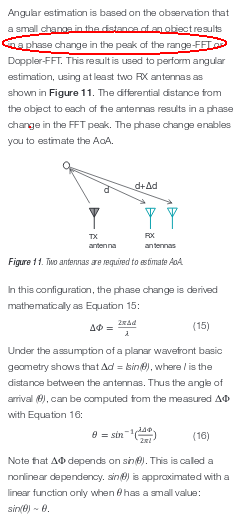Hi,
I am interested in aoa estimation. In the white paper "The fundamentals of millimeter wave sensors", SPYY005, Cesar Lovescu and Sandeep Rao discusses aoa estimation by the phase difference of a signal at two receiving antennas. I understand the principle but I have a variety of questions for relative phase determination in a complex scattering environment. I would like to converse with these two authors or someone else that would be able assist me.
Thanks.
Al






